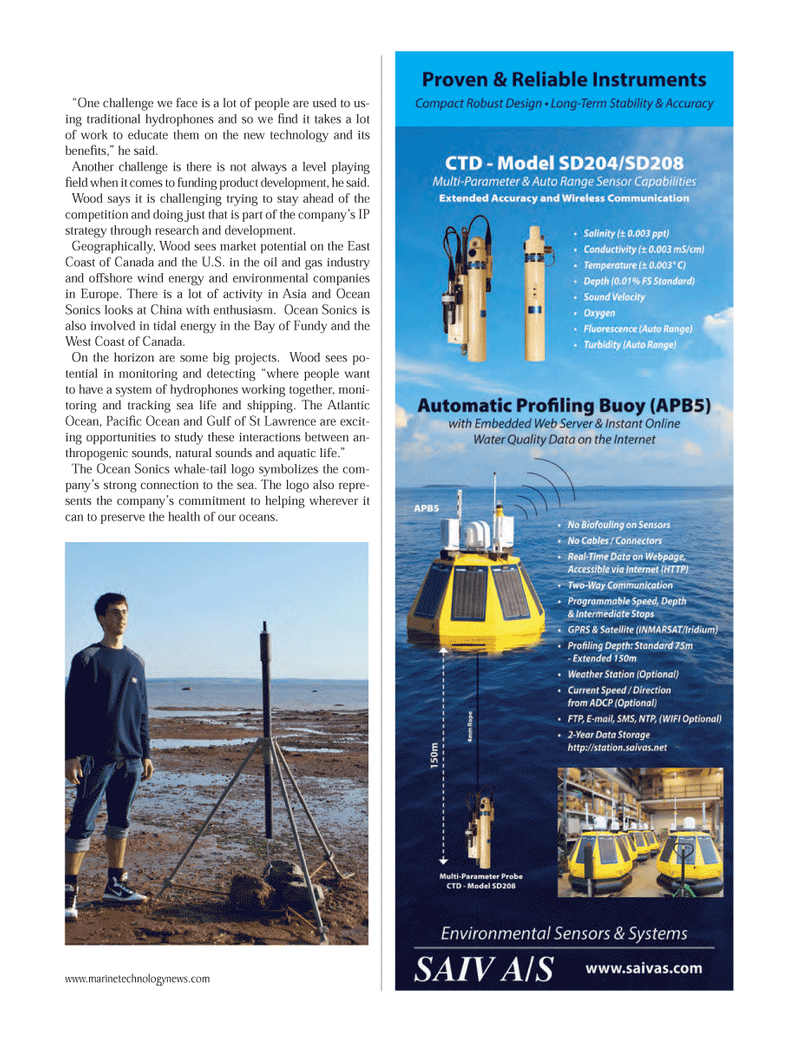
Page 51: of Marine Technology Magazine (September 2014)
Ocean Observation: Gliders, Buoys & Sub-Surface Networks
Read this page in Pdf, Flash or Html5 edition of September 2014 Marine Technology Magazine
“One challenge we face is a lot of people are used to us- ing traditional hydrophones and so we fi nd it takes a lot of work to educate them on the new technology and its benefi ts,” he said.
Another challenge is there is not always a level playing fi eld when it comes to funding product development, he said.
Wood says it is challenging trying to stay ahead of the competition and doing just that is part of the company’s IP strategy through research and development.
Geographically, Wood sees market potential on the East
Coast of Canada and the U.S. in the oil and gas industry and offshore wind energy and environmental companies in Europe. There is a lot of activity in Asia and Ocean
Sonics looks at China with enthusiasm. Ocean Sonics is also involved in tidal energy in the Bay of Fundy and the
West Coast of Canada.
On the horizon are some big projects. Wood sees po- tential in monitoring and detecting “where people want to have a system of hydrophones working together, moni- toring and tracking sea life and shipping. The Atlantic
Ocean, Pacifi c Ocean and Gulf of St Lawrence are excit- ing opportunities to study these interactions between an- thropogenic sounds, natural sounds and aquatic life.”
The Ocean Sonics whale-tail logo symbolizes the com- pany’s strong connection to the sea. The logo also repre- sents the company’s commitment to helping wherever it can to preserve the health of our oceans. www.marinetechnologynews.com
MTR #7 (50-65).indd 51 8/27/2014 10:40:29 AM

 50
50

 52
52
